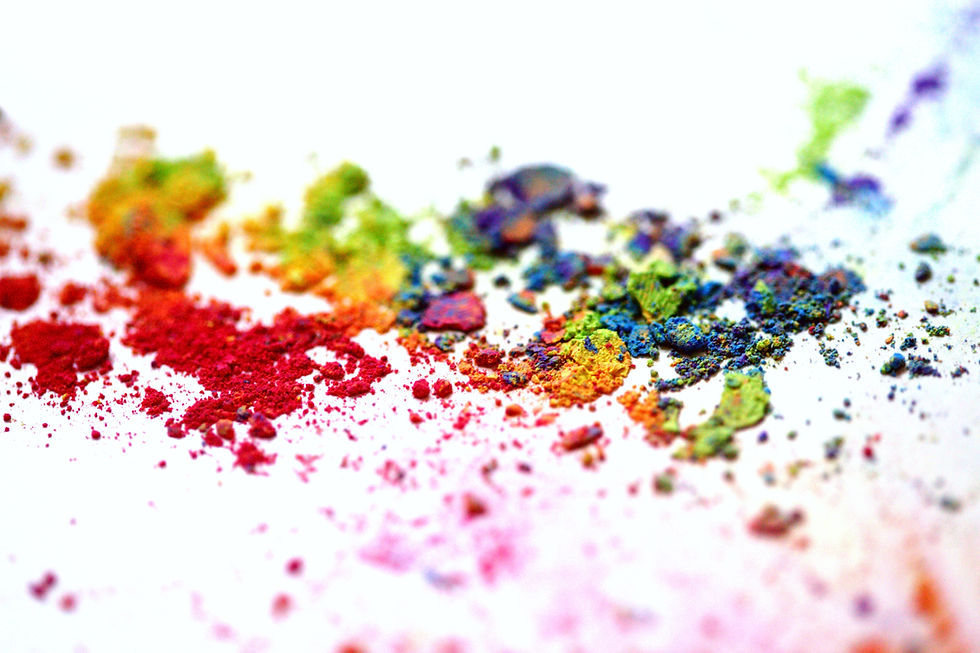White, the colour of snow, purity and light.
- Laura Longoni

- May 20, 2024
- 2 min read
Updated: Mar 6

White is the first achromatic colours and considered a true neutral colour. White is the colour of light, that can be divided into different hues according to their different wavelenghts, and, similar to black and grey, it doesn’t have an own hue.
In the additive RGB colour mixing model the mixture of the 3 primaries red, green and blue gives back a (chromatic) white (see also my post about interference pearl acrylic paints).
In this post I will talk about the origin of the colour name itself, its meaning in psychology and symbolism, the most important pigments and shades for art.
Where does the colour name "white" come from?
The word “White” comes from the old English term hwīt. It is the other achromatic colour, opposite to black, and the colour of the light.
What does the colour white mean in psychology?
White is the symbol of divine, purity and sobriety. It’s the colour of light, that can also help us to look into ourselves and find our way towards a better and healthier existence.
White creates luminous, clean and limitless atmospheres. On the other side white can be also seen in a negative way as the colour of cowardice, to underline the behaviour of somebody who is too weak or too good to speak his mind up, even if he is right.
What are the most important white pigments?
The white paints is usually produced using titanium or zinc pigments.
The most important pigments in art, indicated with PW in the “Colour of Art Pigment Database", are:
PW4 Zinc Oxide White
PW6 Titanium White
Most important white shades for art.
White is the colour used to create tints for other colour hues. A shade of white, due to the mixed black, would be a neutral grey.
More related white colours are:
Chalk White
White smoke
Ivory (with a slightly yellowish tendency)
Seashell (a pinkish white similar to the one of seashells)
Beige (a tinted brownish white)
Vanilla
What is the difference between mixing white and titanium white?
Another variation of white paint in art is the so-called "mixing white". Even though both white paints (titanium white and mixing white) contain the same white pigment (PW6) what makes mixing white special is the difference in the tinting strenght when mixed to other paints.
Mixing white doesn’t change the saturation and brightness of the colour hue.
For this reason, mixing white can be used to obtain lighter tones of fluo paints without compromising their luminous properties.
Titanium white, on the contrary, desaturate the main hue, creating tints (pastel colours) and making the colours more opaque.
Final words.
This was my post dedicated to the discovery of the colour of light. Even though it seems to be an anonymous colour, it is the most complete and surprising one, containing all the hues of the colour wheel.
Is white your favourite colour?
Thank you for reading. If you like the post, leave a like, a comment and don't forget to follow my blog, Instagram and Threads and share the content on your social media.
I hope you enjoyed the serie and until my next post I wish you a great and creative day!
Laura




Comments